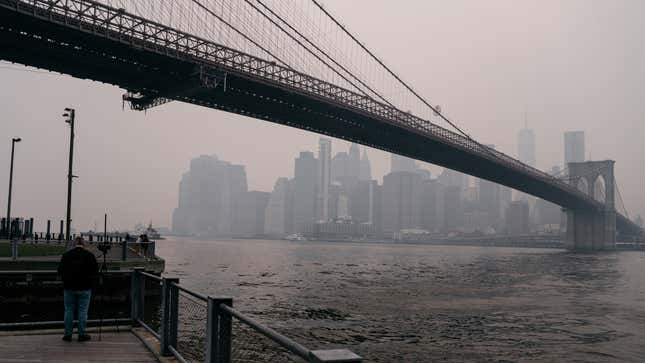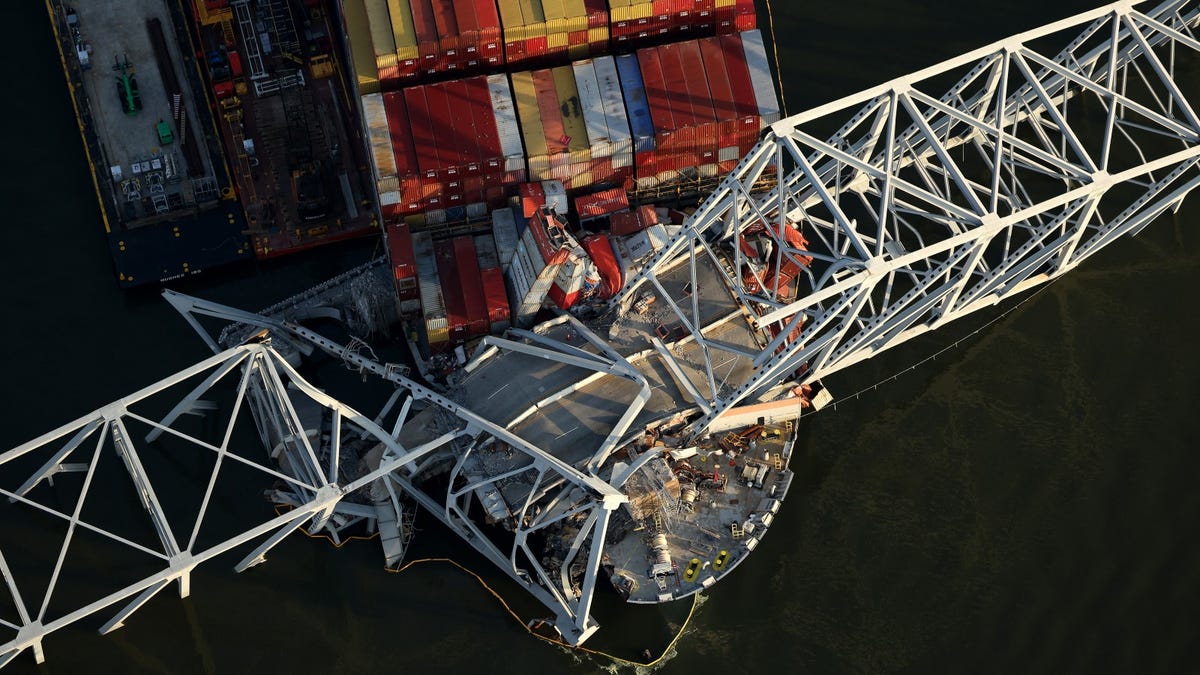Protection around America’s bridges has been thrown into question in recent weeks after a massive container ship hit and destroyed the Francis Scott Key Bridge in Baltimore last month. Now, it’s emerged that the safety standards many U.S. bridges are built to are actually based on antiquated models developed in West Germany decades ago.
Calculations designed to figure out how much protection a bridge needs from ship strikes were developed more than 50 years ago in West Germany, reports the Washington Post. What’s more, the models used rely on forces that would be exerted by a 195-foot barge hitting a bridge, and not the modern superships that sail our seas today, which can measure upwards of 900-feet. As the Post reports:
There was nothing inherently wrong with the West German research, which was published in 1976, said Preben Terndrup Pedersen, a bridge strike expert and emeritus professor at the Technical University of Denmark. That early research had been focused on protecting reactors on nuclear-powered ships, and forms the basis for calculating the “ship collision impact force” on bridge piers in the U.S. specifications.
“But the numerical tools we have developed since then and the experience we have today are so much better,” Pedersen said. In a 2020 study in the journal Marine Structures, he and his colleagues found that U.S. specifications undercount the force of a collision with a large container ship by 40 percent and require far less resistance to ship strikes than the Eurocodes design standards used in the European Union. The study found the specifications were reasonable for calculating the force from some smaller ships.
Following the 2020 study, experts warned that more needed to be done to protect bridges from the possibility of a head-on collisions. However, one expert the Post spoke with warned that legislation sometimes needs a “wake-up call” like the Baltimore bridge collapse to bring about real change.
However any change to the rules governing bridge safety would likely only cover new constructions, leaving hundreds of bridges across America vulnerable to similar disasters. That’s because there are still bridges spanning busy waterways without any protection at all, simply because they were built before it was required.
In illustration of this issue, the Post spoke with one expert who argued that for its time, the Francis Scott Key Bridge met the safety requirements. However, those were from the 1960s when the largest ship sailing the seas was the Encounter Bay, which could carry roughly half the number of containers as the Dali. As the Post adds:
Back then, the minimum bridge design specifications did not include standards for how strong a bridge needed to be to withstand getting hit by a ship. Those didn’t come until 1994, according to the association, three years after its members drew up initial guidelines on the issue.

Now, the Federal Highway Administration has reassured experts that it “routinely revises and updates” safety regulations for constructions such as bridges, adding that it is “confident in the reliability and level of safety of these standards,” says the Post.

